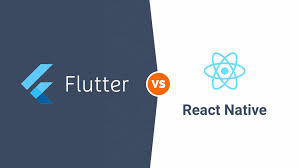Flutter vs React Native in 2025: Choosing the Right Framework for Mobile App Development
The landscape of mobile app development is constantly evolving. In 2025, Flutter and React Native remain dominant players in the cross-platform development space, each offering unique strengths and weaknesses. This article will help you navigate the decision-making process, enabling you to select the framework best suited for your project.
Performance and User Experience
Flutter: Flutter uses the Dart programming language and its own rendering engine, Skia. This results in exceptionally high performance and smooth animations. The “compile-to-native” approach minimizes the performance overhead associated with JavaScript bridges found in React Native.
React Native: React Native relies on JavaScript bridges to communicate with native components. This introduces a performance bottleneck, particularly when dealing with complex UI interactions or computationally intensive tasks. While performance improvements have been made, Flutter generally provides a more fluid and responsive user experience.
Development Speed and Ease of Use
Flutter: Flutter’s “hot reload” feature significantly speeds up development, allowing for near-instantaneous updates to the app’s UI. The declarative programming style and rich set of pre-built widgets make development relatively quick and straightforward.
React Native: React Native’s component-based architecture and familiarity to JavaScript developers contribute to rapid development. However, managing native modules and dealing with platform-specific inconsistencies can sometimes slow down the process.
Ecosystem and Community Support
Flutter: Flutter’s community has grown exponentially. It boasts extensive documentation, a large number of readily available packages (via pub.dev), and a vibrant community providing ample support.
React Native: React Native also enjoys a massive community and a mature ecosystem. The vast number of readily available third-party libraries and components reduces development time, although the quality and maintenance level can vary.
Code Reusability and Maintainability
Flutter: Flutter promotes code reusability through its widget-based architecture. The single codebase can be used to create apps for both iOS and Android with minimal platform-specific adjustments. Maintainability is generally high due to the cleaner and more organized code structure.
React Native: While React Native also supports code reusability, managing platform-specific differences can sometimes lead to code duplication. Maintaining large React Native projects can become complex depending on how the codebase is organized and managed.
Example: Simple Counter App (Conceptual)
Flutter (Dart):
|
|
React Native (JavaScript):
|
|
Conclusion
The choice between Flutter and React Native depends heavily on your specific project requirements. If you prioritize peak performance and a smoother user experience, Flutter is a strong contender. If you value rapid development leveraging existing JavaScript skills and a massive ecosystem, React Native might be more suitable. Carefully weigh the pros and cons outlined above to make an informed decision. Both frameworks provide powerful tools for building high-quality mobile apps.
